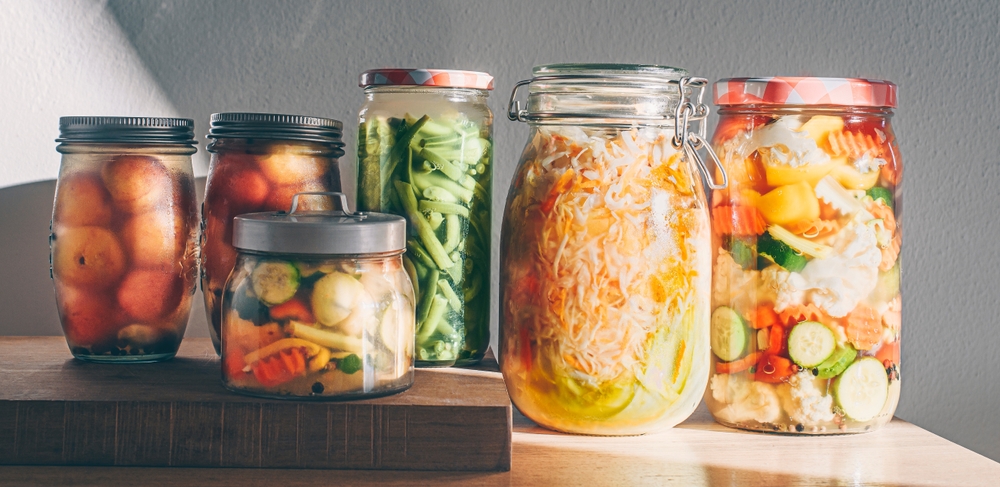Using fermentation and preservation techniques for year-round variety
Fermentation and preservation transform seasonal harvests into consistent ingredients that support sustainable kitchens and resilient menus. By combining traditional techniques with modern traceability and culinary tech, cooks and food businesses can reduce waste, work with local suppliers, and design year-round offerings that retain seasonal character.

Preserving seasonal harvests through fermentation and other preservation methods allows kitchens to extend peak flavors throughout the year while reducing waste and strengthening local supply relationships. These approaches—ranging from lacto-fermentation to vinegar cures, smoking, drying, and canning—create pantry staples that help maintain variety on menus, support sustainability goals, and improve traceability when properly documented.
How does fermentation support sustainability and seasonality?
Fermentation captures the character of a single season and makes it usable months later, helping kitchens respect seasonality without losing menu diversity. When surplus produce is fermented into condiments, pastes, or pickles, less food is discarded and the carbon footprint associated with repeated sourcing can fall, particularly if local produce is prioritized. Fermentation also often requires modest energy inputs compared with some cold-chain preservation, and it can increase the nutritional or sensory value of ingredients, creating appealing additions to year-round dishes.
How do preservation methods aid sourcing and traceability?
Choosing appropriate preservation methods influences how easily ingredients can be traced to their origin. Canning, vacuum-sealing, and labeled fermentation jars with batch identification all support transparency in sourcing. Maintaining supplier records, harvest dates, and processing logs creates a traceability pathway that simplifies recalls and strengthens claims about local procurement. Good documentation also helps kitchens comply with regulatory requirements and supports quality assurance across the supply chain.
How can menu engineering use plant-forward pairings?
Menu engineering benefits from preserved components that provide consistent flavor anchors. Plant-forward pairings—such as preserved lemon with roasted vegetables, fermented beans with grains, or pickled vegetables with salads—allow chefs to craft dishes that highlight preserved seasonality while remaining balanced and recognizable. Using preserved elements as finishing touches or base flavors supports cross-utilization across menus, simplifies inventory forecasting, and helps maintain coherent menu narratives throughout the year.
How do supply chain and local networks affect quality control?
A responsive supply chain and strong local partnerships improve both the quality and predictability of preserved ingredients. Fast transfer from harvest to preservation retains flavor and reduces microbial risk. Implementing quality control protocols—sensory checks, pH measurements for acidified products, and temperature logs—reduces batch variability. Clear agreements with local suppliers about harvest timing and product specs also enable more reliable menu planning and support sustainable sourcing practices.
How can culinary tech improve allergen labeling and safety?
Culinary tech tools can streamline batch tracking, allergen labeling, and storage monitoring for preserved and fermented items. Digital systems that tie batch IDs to ingredients, supplier data, and processing steps reduce human error in labeling and improve transparency for customers. Temperature sensors and automated alerts help avoid spoilage, while inventory platforms enable accurate allergen declarations on menus by tracking shared equipment and cleaning schedules—critical steps to minimize cross-contact and support safe dining.
What practical steps ensure consistent quality control?
Consistent quality control starts with standard operating procedures for preservation: defined salt or acid concentrations, vessel sanitation, fermentation windows, and storage conditions. Maintain written batch logs with dates, ingredient sources, and sensory notes. Rotate stock using clear first-in, first-out rules and train staff on tasting and hazard recognition. Regularly audit records and, when scale requires, consider lab testing for pH and microbial indicators. These actions support traceability, help with allergen labeling, and protect both food safety and flavor consistency.
Applying fermentation and preservation thoughtfully helps kitchens expand year-round variety while aligning with sustainability and local sourcing priorities. Integrating clear traceability, menu engineering that leverages preserved elements, and culinary tech for monitoring and labeling strengthens both culinary outcomes and operational resilience. With documented quality control and strong supplier relationships, preserved and fermented ingredients can enrich menus without sacrificing safety or seasonal identity.





